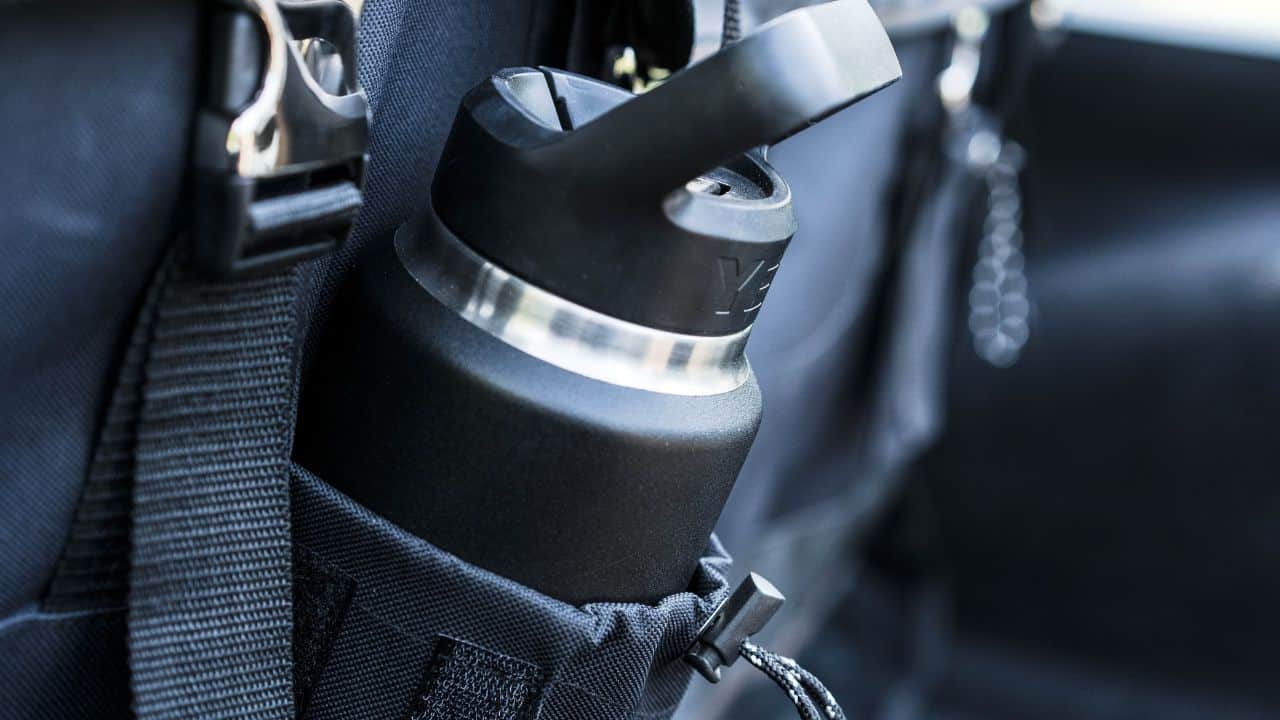In outdoor gear discussions, Stanley vs Yeti often takes center stage. These powerhouses have redefined the insulated bottle, merging practicality with modern design. Both Stanley and Yeti have carved out a reputation for reliability and top-tier performance in the market. Let’s dive into a comprehensive comparison of their standout bottles, shedding light on their strengths and differences.
Introduction to the Brands
To begin with, here’s a short overview of both companies before diving into the direct comparison.
Founded in 1913 by William Stanley Jr., Stanley is a brand with over a century of heritage. By inventing the steel vacuum bottle, Stanley revolutionised how people consumed hot and cold drinks, earning the company a loyal following that has steadily grown. The brand’s name became synonymous with timeless design, rugged construction, and unparalleled thermal insulation.
While Yeti is a relatively new company in the insulated bottle market, it is also one of the most formidable. Since its launch in 2006, Yeti has gained a significant market share due to its high-quality materials, modern design aesthetics, and top-tier insulation technology. Consumers seeking highly functional, stylish, and well-made outdoor gear are increasingly choosing this brand over all others.
Having presented these introductions, I will compare Stanley and Yeti in-depth, analysing these famous brands in several categories. These include insulation, design, durability, price, additional features, size and capacity, and warranty. This comprehensive comparison will help you understand the appeal of these brands and, ultimately, assist you in choosing the right one for your needs.
Stanley IceFlow Bottle
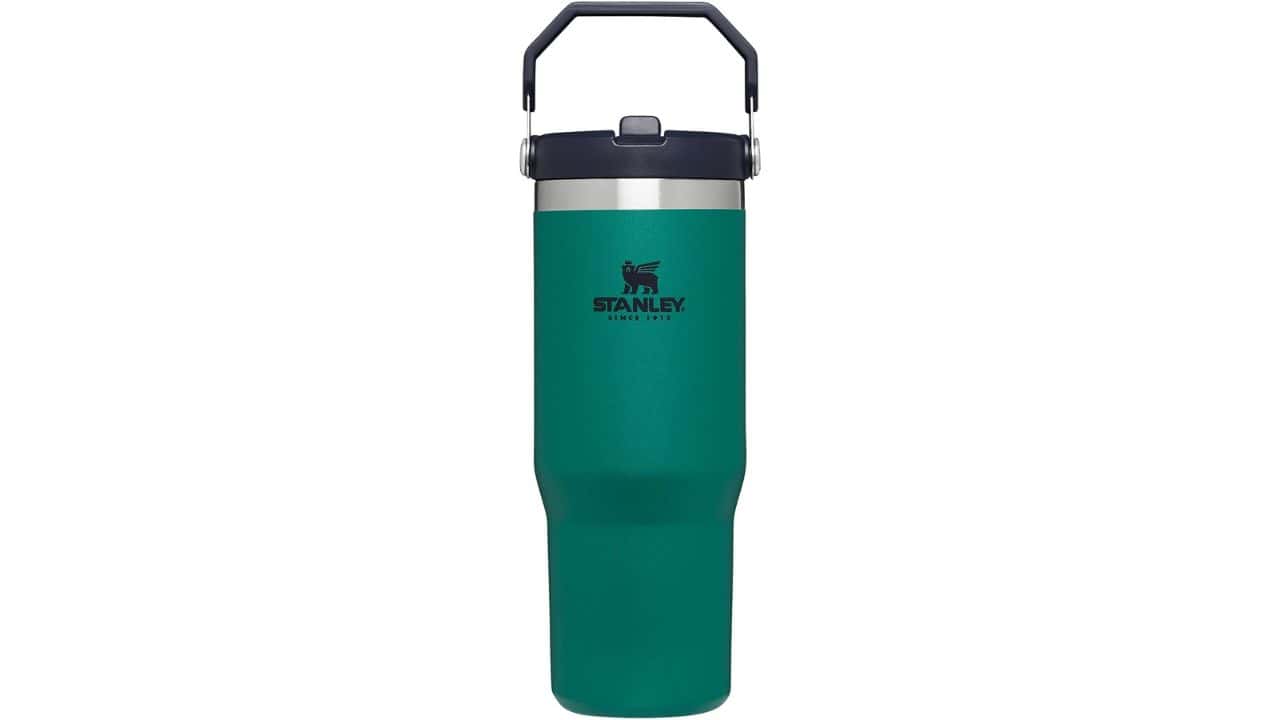
Specifications:
- Material: Stainless steel
- BPA-free: Yes
- Colours available: 22
- Sizes available: 4
- Warranty: Lifetime
Available in four sizes and almost two dozen colours, Stanley’s immensely popular IceFlow Bottle is a worthwhile Yeti alternative. This beautifully-designed, well-made product is highly functional but also exceptionally easy to use, thanks to the addition of a few well-thought-out features.
These include an ergonomic, rotating handle and the titular IceFlow straw that is leakproof and allows effortless sipping on the go. Moreover, the model sports phenomenal double-walled insulation that can keep drinks hot, cold, or chilled for a long time. Finally, it comes with a lifetime warranty – something you rarely see in reusable bottles.
Pros:
- Sturdier than its rival
- Easy-to-use straw
- Ergonomic, rotating handle
- Lifetime warranty
Cons:
- Some people may not like the more traditional design
- Fewer colours & sizes
Yeti Rambler Bottle
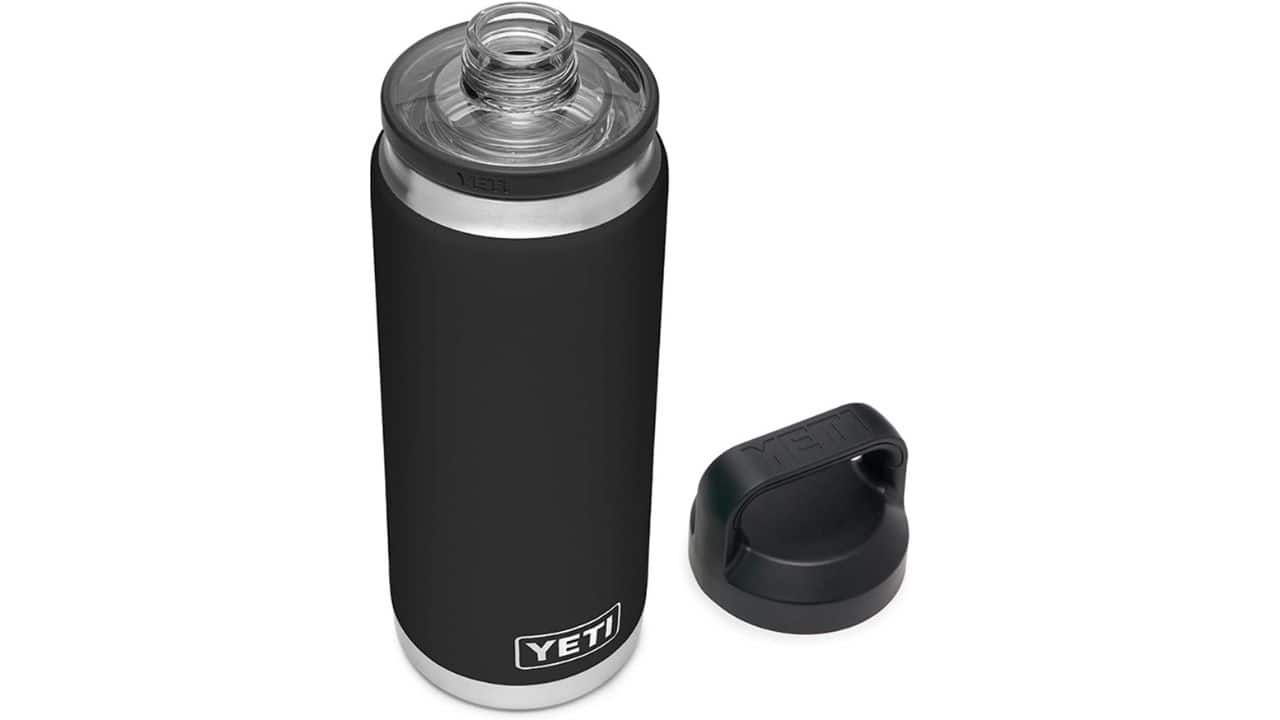
Specifications:
- Material: Stainless steel
- BPA-free: Yes
- Colours available: 23
- Sizes available: 5
- Warranty: 5 years
One of Yeti’s best-selling products and a member of the famous Rambler line, this bottle is held in high regard by thousands of people worldwide for a good reason. Like its rival, it also features double-walled vacuum insulation that works wonders when it comes to maintaining the temperature of cold and hot drinks.
However, that’s not the only good thing about the Rambler. It is also highly durable, features a minimalistic yet eye-catching design, and is equipped with the company’s proprietary Chug Cap that makes it easy to take a sip without slowing down – ideal for drinking on the go. The Rambler also sports Yeti’s Duracoat Finish which is resistant to cracking, peeling, and fading.
Pros:
- Sleek, contemporary design
- Better colour selection
- Available in more sizes
- Duracoat Finish
Cons:
- Less durable than its competitor
- Pricier
A Comparative Review
Insulation
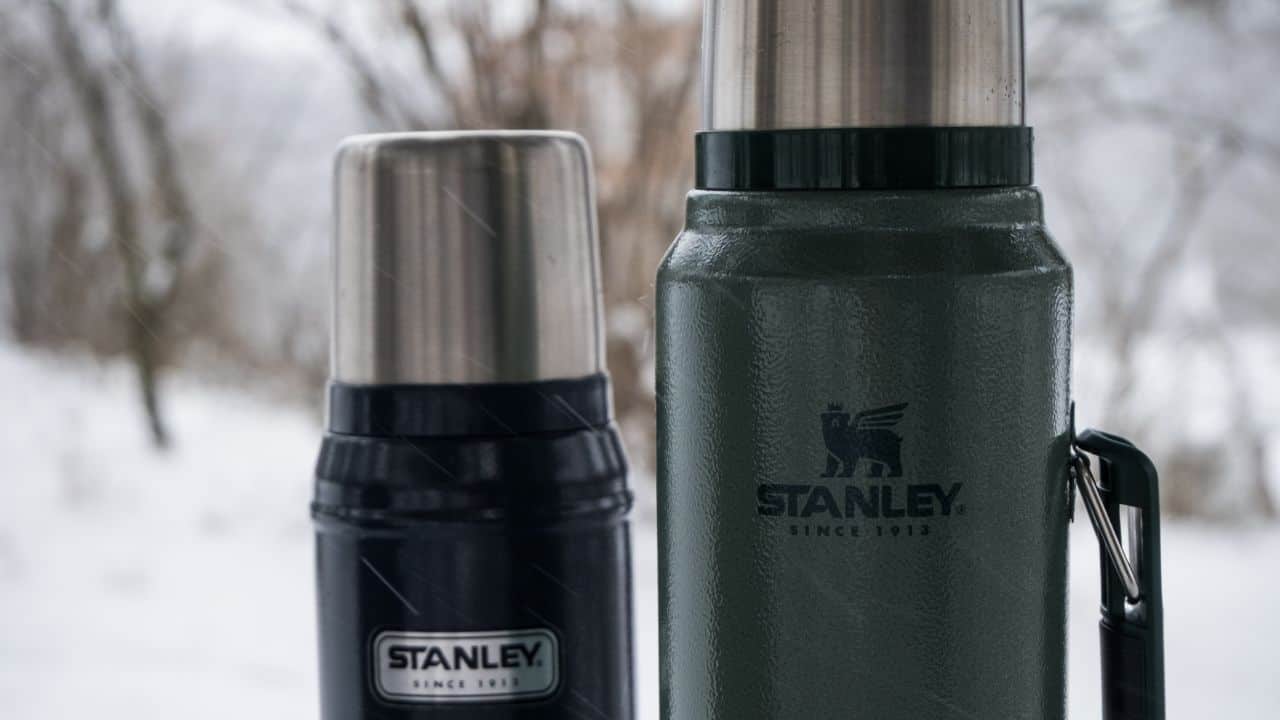
Stanley is nearly legendary in the outdoor gear world for its excellent thermal insulation. As mentioned above, the company has an impressive legacy going back to the early 20th century when its founder came up with the all-steel vacuum bottle and, in that way, revolutionised the vacuum bottle industry.
The brand’s vacuum insulation technology is famed for its ability to maintain the temperature of hot and cold drinks for a long time. For instance, their Classic series promises to keep liquids hot for 40 hours, cold for 35 hours, and iced for astonishing 160 hours.
Although much younger than its rival, Yeti has quickly gained recognition with its superb insulation technology. The company’s most popular series of products – Rambler – incorporates double-walled vacuum insulation for long-lasting warmth or coldness. Still, Yeti generally offers less insulation time than Stanley, although the exact figures depend on the bottle size.
The Stanley bottle featured in this comparison (IceFlow) is not a member of the brand’s famous Classic lineup and, as such, can’t maintain the temperature of drinks for as long as those bottles can. Still, insulation-wise, the model’s performance is remarkable – it will keep your cold drinks cold for 7 hours and hot drinks for 12 hours.
The Yeti Rambler Bottle incorporates the same insulation technology and performs similarly in temperature maintenance. However, an important thing to note here is that the model’s Chug Cap is not meant to be used with hot drinks. Remove the spout and drink the hot beverage straight from the bottle if you want to use your Rambler for coffee or tea.
Design
In a market flooded with options, aesthetic appeal is often as essential as functionality – it’s as simple as that. Stanley bottles typically sport a vintage design with a timeless, rugged charm. The “Hammertone” finish featured on some of Stanley’s bottles is instantly recognisable. For those who prefer a more modern look, this design may seem dated, even though it may appeal to those with a taste for nostalgia.
The design philosophy of Yeti, on the other hand, is a contemporary one. The brand’s bottles showcase a range of vibrant colours, minimalistic aesthetics, and clean lines. In addition to their sleek appearance, Yeti bottles also have expanded mouth openings (easy drinking), making them popular with younger people.
Stanley’s IceFlow Bottle is a rare example of the company trying to match its competitors’ offerings colour-wise. As shown in the specifications above, the model is available in 22 different colours, ranging from simple white (“Polar”) to vibrant orange (“Tiger Lilly”). It’s a lightweight, well-designed piece of drinkware that can be as unnoticeable or eye-catching as you want, depending on your chosen colour.
Still, Yeti is a clear winner in this category. Their Rambler bottle is available in many vibrant colours while still sporting the clean, minimalistic design the brand is well-known for. An important thing to mention here is that the colour can significantly impact the product’s final price: the standard black variant will cost you about $40. At the same time, some of the more vibrant options can elevate the bottle’s price to a whopping $90.
Durability
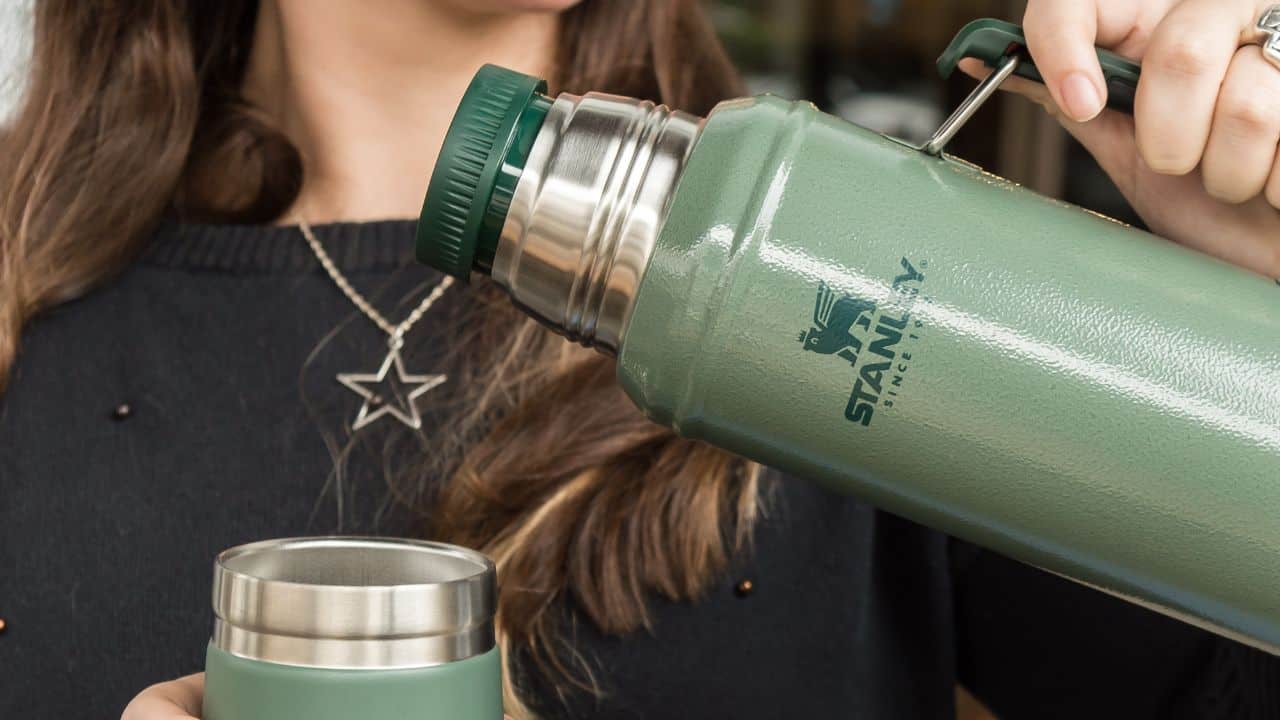
Due to harsh outdoor conditions, insulated bottles must be durable. Both Stanley and Yeti make their bottles virtually indestructible by using high-quality stainless steel to construct them.
It is well known that Stanley bottles are durable and can withstand rough handling and even accidental drops due to their robust construction – the models from their Classic series feature 18/8 stainless steel bodies that ensure longevity and prevent rust.
Yeti’s bottles are just as sturdy since they feature similarly durable materials, capable of resisting dings and dents. In addition, the exterior of a Yeti bottle always remains dry due to its “No Sweat” design, which reduces the chances of it falling or slipping.
In a similar vein, when exploring Hydrapeak vs Yeti in terms of durability, consumers often find themselves weighing the merits of Hydrapeak’s premium materials against Yeti’s renowned ruggedness. Both brands have established themselves as reliable choices for outdoor enthusiasts and everyday users alike, each offering a unique blend of durability and design that appeals to various audiences.
The Stanley bottle featured in this comparative review is exceptionally durable due to its 18/8 stainless steel construction. Moreover, the same goes for its plastic parts – the model’s straw is nothing like the ones found on cheap reusable bottles made by no-name brands. The IceFlow Bottle is a capable, sturdy piece of drinkware whose Lifetime Warranty proves it’s a worthwhile investment that can serve you for years.
While not as rugged as its rival, Yeti Rambler Bottle is still very much a durable and dependable product. The model was made to withstand the most challenging conditions – hence the 18/8 stainless steel construction also found in its competitor. An especially praiseworthy feature is the presence of the Duracoat Finish, whose job is to prevent the effect of daily use on the bottle’s exterior (protection against peeling and fading).
In the broader context of drinkware durability, the Stanley vs Hydro Flask debate emerges as another intriguing comparison. While Stanley’s ruggedness is evident in its battle against Yeti, Hydro Flask, much like Yeti, combines durability with modern aesthetics. Both Stanley and Hydro Flask have their unique strengths, making the choice between them a matter of specific needs and brand loyalty.
Size and Capacity
A bottle’s capacity and size are crucial factors to consider, mainly if it is intended for a specific purpose. Both of the brands compared in this article provide a wide variety of sizes for their products to meet the needs of a broad range of customers.
The Stanley IceFlow Bottle is available in four sizes, from the compact 20oz model to the spacious 64oz variant. Whether you’re out for a short hike, an all-day excursion, or a multi-day camping adventure, Stanley’s got your back.
The bottles from Yeti’s Rambler lineup – including the one featured in this comparison – are also available in multiple sizes. The one we’re discussing here comes in 18oz, 26oz, 36oz, 46oz, and 64oz variants. I should also point out that Yeti is one of those rare drinkware companies offering a unique 1-gallon (3.78 litres) option – the Rambler Jug – ideal for outdoor activities requiring a lot of water.
Even though both brands offer similar sizes for standard insulated bottles, Yeti has an advantage regarding extremely large capacities. It’s the best of all highly-regarded brands for folks always searching for extra-large water containers.
Additional Features
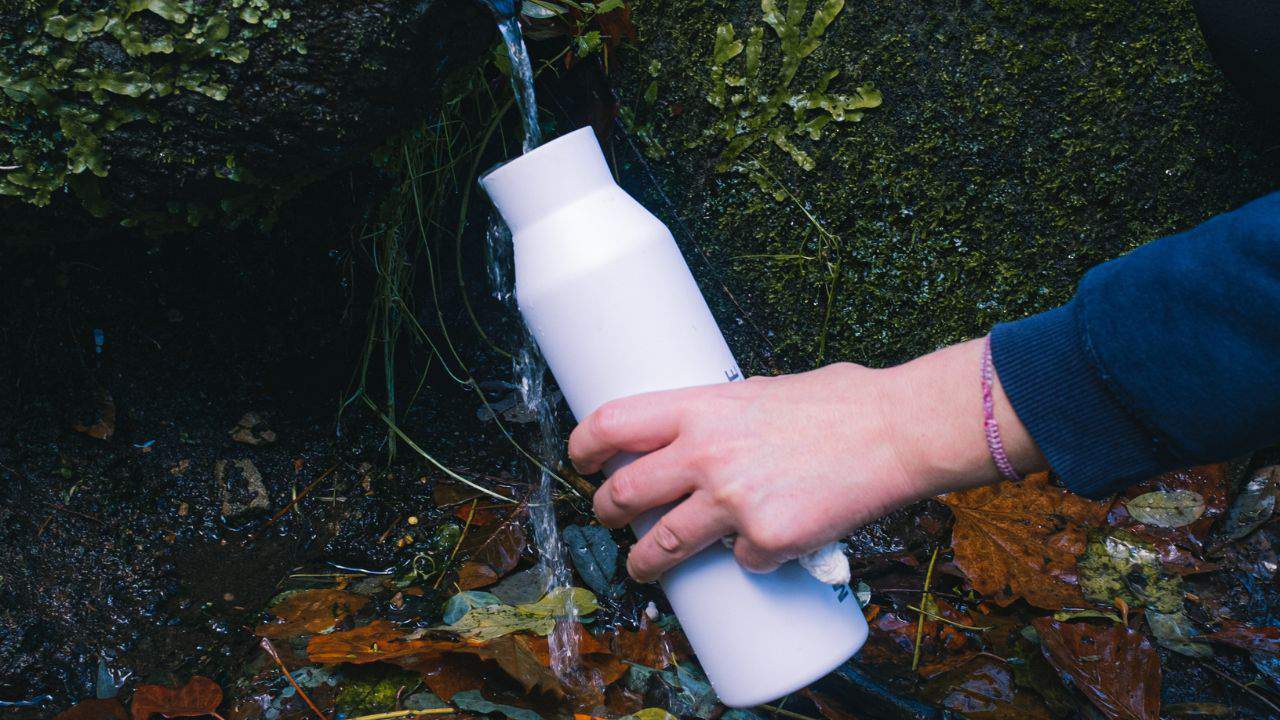
Additional features can often tip the balance when choosing between similar products – just like the price. In addition to leakproof lids, many Stanley bottles feature dual-purpose cups. Additionally, many Stanley bottles have a handle that makes them convenient to carry.
Its rival offers a range of lids that customers can purchase separately, including a hotshot cap, a chug cap, and a straw lid. The customisability of Yeti’s products gives it an edge over the competitors – you can adapt your bottles to suit your specific needs.
Unlike many of Stanley’s other bottles, the IceFlow one doesn’t feature a fixed handle. Instead, it sports an ergonomic, rotating handle that makes using and carrying this piece of drinkware as easy as possible. On the other hand, the user can snap shut the model’s straw and, in that way, prevent accidental leaks and spills.
Regarding Yeti Rambler’s additional features, the simple handle (which does not rotate like the one found on Stanley’s model) and the titular Chug Cap are the only ones worth mentioning. The cap allows easy drinking on the go – you only have to half-twist the handle to access it and easily take a few sips while running or cycling. Once again, remove the Chug Cap when using the bottle for hot beverages.
Price
The price becomes a significant factor when two products are closely matched in terms of performance. Stanley has always been known as an affordable brand. The company’s bottles deliver much value for the money, given their design, durability, and insulation performance.
In contrast, Yeti bottles are accompanied by higher price tags. It’s one of those brands with premium reputations that, accordingly, charge premium prices. However, due to Yeti’s modern design and prestigious reputation, many consumers consider its higher price justified.
The price of Stanley’s IceFlow bottle depends on the chosen size and colour. For example, the green (“Alpine”) variant of the largest, 64oz version can cost as much as $50. Still, this is nothing compared to Yeti’s price tags – even the small, 26oz variant can cost as much as $90 if you decide to go with one of the vibrant colours, such as orange or yellow.
This only confirms what I said about the brand’s prestigious reputation – the company charges a lot of money for some of its products as it has become an industry leader with a loyal following. Obviously, this makes the IceFlow bottle a much better choice for those on a budget. Still, it’s worth pointing out that both of these pieces of drinkware, when chosen in basic colours, can be obtained at similar prices.
Yeti versus Hydro Flask has been a topic of debate for many enthusiasts. Hydro Flask, like Yeti, is also known for its premium pricing and modern design, often drawing comparisons in terms of insulation and durability. However, when it comes to price, Hydro Flask often sits between Stanley and Yeti, offering a balance for those seeking both quality and affordability.
Warranty
The warranty policy of a brand is a significant factor that potential buyers should consider, as it can often prove the company’s confidence in the quality of its products.
In honour of its commitment to quality and long history, Stanley provides lifetime warranties on its vacuum bottles. As a result, you can expect a replacement model from the brand if your bottle fails to perform due to manufacturing defects, giving you peace of mind about your investment.
Warranties accompany Yeti products, too, although they vary in duration. For example, the Rambler series bottles come with a five-year warranty, which reflects the brand’s commitment to customer satisfaction and product quality, even though it’s less comprehensive than Stanley’s.
Conclusion
A thorough comparison of Stanley and Yeti insulated bottles has shown that both companies offer high-quality products with distinctive features.
Known for its affordability, solid durability, and outstanding thermal insulation, Stanley stands as a symbol of tradition and dependability. On the other hand, Yeti shines with its prestigious brand reputation, customisable features, and modern design aesthetics.
The answer to which bottle is better ultimately depends on what you value most. Stanley is your champion if you want excellent thermal insulation and are on a budget. However, if customisation, brand prestige, and modern aesthetics are more important to you, Yeti is your best bet.
While there’s no doubt that outdoor enthusiasts will continue to debate Stanley vs Yeti, one thing is clear: regardless of your choice, you’ll invest in a product that will deliver on its promise. Your outdoor experiences can be enriched by both Stanley and Yeti, sip by sip.

I love hiking, backpacking, and camping. From the Camino de Santiago to the West Highland Way in Scotland or simply a great day hike on the weekend. Hiking refreshes me, my mind, and keeps my body reasonably fit. So far I have walked three Camino routes and many other long distance hikes in the UK, Canada, and around the rest of Europe. One of the best was my hike up Ben Nevis.

